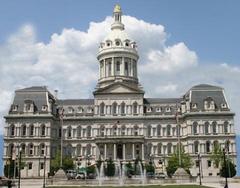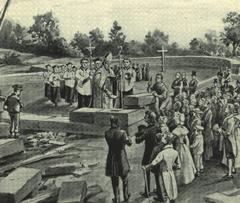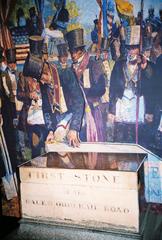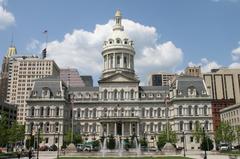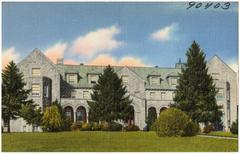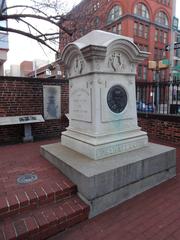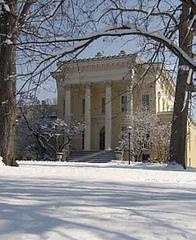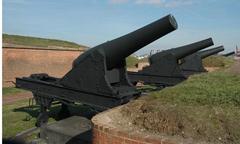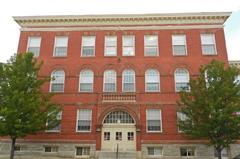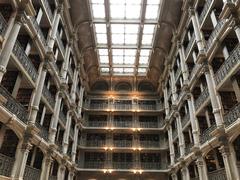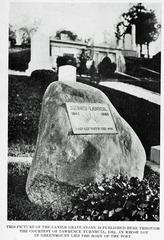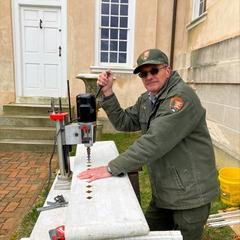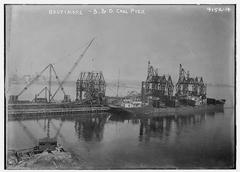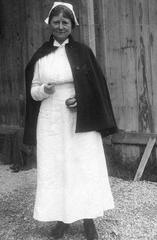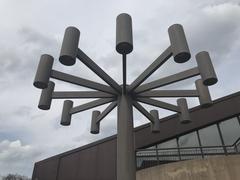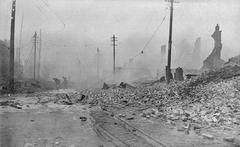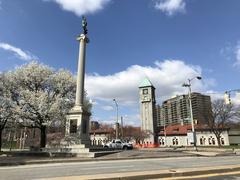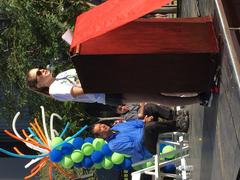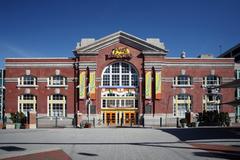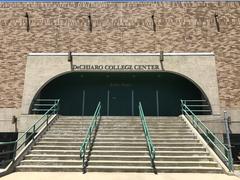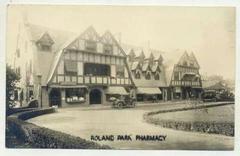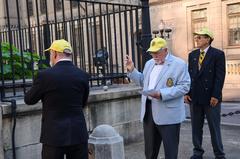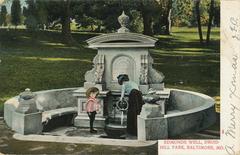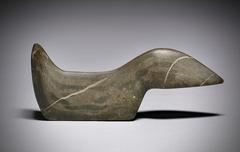
Sydenham Hospital For Communicable Diseases
Sydenham Hospital for Communicable Diseases: Visiting Hours, Tickets, and Baltimore Historical Sites Guide
Date: 03/07/2025
Introduction
Sydenham Hospital for Communicable Diseases is an essential chapter in Baltimore’s history, symbolizing the city’s early public health leadership and architectural innovation. Established between 1922 and 1924, the hospital was designed to treat highly infectious diseases at a time when urban outbreaks were a major threat. Named for Thomas Sydenham, the “father of English medicine,” the hospital’s legacy is preserved in its distinctive architecture and its significant role in shaping modern medicine and public health strategies (Maryland Historical Trust; Baltimore Heritage; Wikipedia).
Although the hospital has closed, its buildings remain notable landmarks in Baltimore’s landscape. This guide provides historical context, practical visiting information, and suggestions for exploring nearby attractions, making it a valuable resource for history enthusiasts, architectural admirers, and anyone interested in Baltimore’s public health journey.
Table of Contents
- Sydenham Hospital: Historical Overview
- Architectural Significance
- Public Health Impact
- Transition and Preservation
- Visiting Information
- Nearby Attractions
- Community and Cultural Context
- Frequently Asked Questions (FAQ)
- Visitor Tips and Recommendations
- Visual Resources and Further Reading
- References
Sydenham Hospital: Historical Overview
Sydenham Hospital was established in response to recurring epidemics of tuberculosis, diphtheria, scarlet fever, and smallpox in Baltimore’s growing urban population (Maryland Historical Trust). Its purpose-built campus featured multiple isolation pavilions and open-air wards, reflecting advances in infection control and patient care. The hospital was not just a place of treatment—it was a model for the design and management of infectious disease facilities in the early 20th century (Explore Baltimore Heritage).
The hospital’s prominent site—spanning neighborhoods like East Baltimore, Reservoir Hill, and Liberty Heights—provided both a practical and symbolic buffer against the spread of disease.
Architectural Significance
The Sydenham Hospital campus is a showcase of Italian Renaissance Revival and Georgian Revival styles, designed by architects such as Edward Hughes Glidden, Sr., and Wyatt & Nolting. The red-brick exteriors, classical details, and symmetrical layouts were chosen for their functionality as much as their aesthetic appeal. The hospital’s spatial arrangement—with separate pavilions for different diseases, staff residences, and support buildings—was meticulously planned to minimize cross-infection and maximize recovery through sunlight and fresh air (Maryland Inventory of Historic Properties; Baltimore City Historic Preservation).
Notable features include:
- Main Hospital Building: Grand façade, arched windows, terra cotta, and stone detailing.
- Nurses’ Home and Staff Residences: Reflecting the main hospital’s style.
- Director’s Residence: Added in 1939, maintaining architectural coherence.
The hospital’s 33.89-acre setting north of Lake Montebello offered both isolation and scenic views (Baltimore City Historic Preservation).
Public Health Impact
Sydenham Hospital was Baltimore’s front line against communicable diseases. It pioneered medical protocols such as pneumothorax therapy for tuberculosis and later incorporated antibiotics in treatment. Staff participated in research collaborations with major institutions like Johns Hopkins University and the University of Maryland, influencing the development of modern public health (Johns Hopkins Medicine; Baltimore Sun Archives).
The hospital’s impact extended beyond medicine: it provided jobs, fostered community health education, and served as a training ground for generations of healthcare professionals (Route 1 Views).
Transition and Preservation
Advances in vaccines and antibiotics reduced the need for dedicated communicable disease hospitals. In 1949, Sydenham was absorbed into Baltimore City Hospitals and shifted focus to general and geriatric care (Baltimore Heritage). Later, Johns Hopkins Bayview Medical Center took over much of the campus, preserving its historic buildings while updating facilities for modern use (Johns Hopkins Bayview).
Portions of the original hospital have been repurposed or demolished, but several key structures remain and are recognized on the National Register of Historic Places (Wikipedia).
Visiting Information
Locations
- Reservoir Hill Site: Former site in Reservoir Hill, near Druid Hill Park.
- Liberty Heights Site: 2300 Garrison Boulevard, Baltimore, MD 21216.
- Montebello Site: North of Lake Montebello, adjacent to the water filtration plant.
Visiting Hours and Access
- Exterior Viewing: Buildings can be viewed from public roads and sidewalks during daylight hours. There are no regular visiting hours or tickets; interior access is not permitted due to current use and preservation efforts.
- Guided Tours: Occasionally, local organizations such as Baltimore Heritage offer guided tours as part of broader medical history programs. Advance registration is usually required.
- Parking and Transportation: Street parking is available near most sites; several locations are accessible by public transit. The Montebello and Reservoir Hill neighborhoods are walkable.
- Accessibility: Exterior viewing areas are generally wheelchair accessible.
Photography
- Exterior photography is allowed from public spaces.
- Interior photography is not permitted.
Nearby Attractions
- Druid Hill Park: Historic park with walking trails, the Maryland Zoo, and scenic views.
- Patterson Park: Urban park with playgrounds and city vistas.
- Highlandtown Arts District: Galleries, murals, and cultural events.
- Baltimore Museum of Industry: Interactive exhibits on the city’s industrial past.
- Baltimore Museum of Art: Renowned art collections a short drive away.
- Historic Fells Point & Canton: Dining, shopping, and waterfront experiences.
Community and Cultural Context
Sydenham Hospital’s history is intertwined with Baltimore’s social evolution. Initially serving only white patients due to segregation, the hospital’s later years reflected the city’s broader social changes. The facility served as a workplace and training center for African American medical professionals, contributing to the city’s medical and cultural diversity (Finding Aids, National Library of Medicine).
Efforts to preserve and commemorate the hospital underscore the community’s commitment to honoring Baltimore’s medical legacy.
Frequently Asked Questions (FAQ)
Q: Can I tour Sydenham Hospital?
A: No regular tours are available, and interiors are not accessible. Exteriors can be viewed from public spaces.
Q: Are there tickets or entrance fees?
A: No tickets or fees are required for exterior viewing.
Q: Is the site accessible for people with disabilities?
A: Yes, exterior viewing areas are generally accessible, but interior access is not.
Q: Are guided tours offered?
A: Occasionally, yes—check with Baltimore Heritage or other local historical organizations.
Q: How can I learn more about the hospital’s history?
A: Extensive archives are available online via the National Library of Medicine, Maryland Historical Society, and Baltimore Heritage.
Visitor Tips and Recommendations
- Plan daytime visits for best lighting and safety.
- Respect private property and posted signs.
- Pair your visit with exploration of nearby parks, museums, and historic districts.
- Explore digital resources for virtual tours and archival images.
- Check event calendars for lectures or guided walks related to Baltimore’s medical history.
- Support preservation efforts by donating or volunteering with local historical societies.
Visual Resources and Further Reading
- Historical photographs and maps are available via Baltimore City Historic Preservation, Maryland Historical Trust Digital Library, and Baltimore Heritage.
- Interactive tours and detailed documentation can further enhance your understanding of the site’s architectural and social history.
References
- Maryland Historical Trust
- Baltimore Heritage
- Wikipedia
- Baltimore City Historic Preservation
- Finding Aids, National Library of Medicine
- Johns Hopkins Medicine
- Baltimore Sun Archives
- Route 1 Views
- Maryland Historical Society
- Baltimore Museum of Art
- Visit Baltimore Official Guide
Summary
Sydenham Hospital stands as a powerful reminder of Baltimore’s fight against infectious disease and its leadership in medical innovation. Though no longer a functioning hospital, its preserved architecture and enduring legacy offer a compelling destination for visitors interested in medical history, architecture, and community heritage. By exploring the hospital’s exteriors, engaging with local archives, and visiting nearby cultural sites, you can gain a deeper appreciation of Baltimore’s storied past.
For updates on tours, events, and new content, download the Audiala app and follow Baltimore Heritage and related organizations on social media.


